Vaping is growing in popularity globally, especially among young people. According to the latest report from the U.S. Centers for Disease Control and Prevention, more than one in 10 young people in the United States regularly smoke vapes. Among adults, vapes are also seen as a potential alternative to traditional cigarettes, especially among those trying to quit smoking. middle.
Juul, a vape company headquartered in San Francisco, USA. Among the wide variety of nicotine vapes are popular (especially among teenagers) for their stylish designs and easy-to-use cartridges. Although Juul is currently forced to shut down its social media and the FDA is investigating concerns that Juul promotes the use of tobacco products by minors, this has no impact on the popularity of Juul vape.
But what is a Juul? Is it safe to use Juul vape? Ingredients in Juul e-liquid, long-term health effects, and what is the difference between Juul and other vapes? What are the health effects of Juul vape? This article has compiled everything you need to know about Juul vape.
What is Juul?
Juul is a vape product developed and sold by the American company Juul Labs. Juul vape was designed to provide a healthier alternative to traditional cigarettes. Juul is no different from other vapes on the market, but it’s the design details that set it apart. Here’s a brief overview:
Design: The design of the Juul vape is very compact, similar to a USB flash drive, making it easy to fit in a pocket or purse.
Operation: The operation of Juul vape is very simple. The user only needs to insert the pod into the device, then press the button or inhale to use it. Juul vape battery life is approximately one day, and charging time is approximately 1 hour.
Cartridges: Juul vape pods contain a nicotine salt solution, a more stable form of nicotine that is easier to absorb than traditional nicotine. Juul vape pods come in a variety of flavors, including tobacco, mint, mango, cream, etc.
Nicotine content: Juul vape pods contain different concentrations of nicotine, ranging from 0mg/mL to 59mg/mL. High-concentration nicotine can provide a stronger throat hit and is suitable for users who smoke larger amounts.
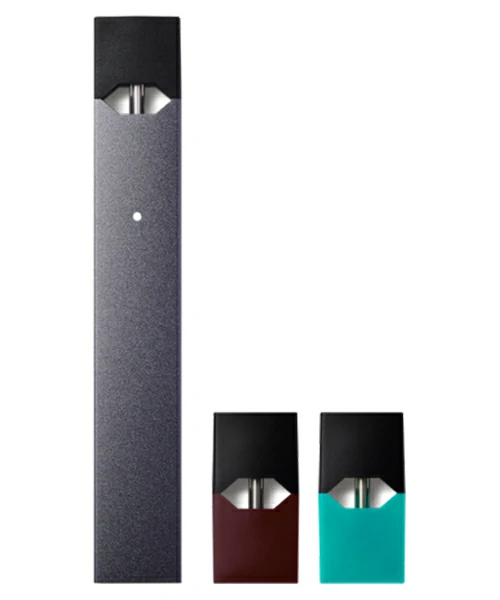
The development history of Juul
Juul Labs was spun off from Pax Laboratories in 2015. Founders Adam Bowen and James Monsees co-founded the company when, as traditional cigarette users, they decided they wanted a better alternative to cigarettes than anything currently on the market.
Their “better” philosophy is reflected in the Juul’s high nicotine content and slim design, which releases very little vapor compared to other vapes. Since its launch, Juul has occupied more than 50% of the market share.
In December 2018, Altria, one of the world’s largest tobacco companies, acquired a 35% stake in Juul for US$12.8 billion. Altria owns Philip Morris, which owns Marlboro, Virginia Slims, Parliament and other cigarette brands.
What is the difference between Juul and other vapes?
Juul’s high nicotine content was once an anomaly in the vape market, but now appears to be the rule, according to research. After Juul gained popularity, other vape manufacturers began increasing the nicotine content of their products.
Juul uses a closed system, meaning users cannot refill the pods themselves, a useful factor in quality control. Some vapes on the market use open systems that allow users to fill the vape themselves with bottled e-liquid or e-liquid.
Juul’s small size, compact design and minimalist style make it more discreet than many other brands. With no buttons or switches, just disposable snap-on cartridges, the Juul is easy to operate, and its built-in temperature regulation prevents you from experiencing a “dry burn.” Dry burn occurs when the e-liquid in a vape cartridge is too little or too hot, resulting in a burnt flavor and throat irritation.
What are the main ingredients in Juul e-liquid?
Juul has two parts. The vape itself contains a battery, a thermostat, and a sensor to read the charge. Then there are the pods, which are filled with Juul’s patented e-liquid formula. A blend of nicotine salts, glycerin, propylene glycol, benzoic acid and flavor.
•Glycerin acts as a humectant, which means it adds moisture to the solution. Glycerin is classified by the FDA as “generally recognized as safe” and is therefore approved for consumption.
•PG (propylene glycol) is a synthetic compound commonly used in the production of polyester, but it is also approved as an additive in food, cosmetics and pharmaceuticals.
•Benzoic acid occurs naturally in many plants, but its synthetic form is also widely used as a food additive and preservative. It is “generally recognized as safe” for these uses, but large amounts can cause environmental and health hazards.
•Fragrance is a vague term, but most commonly refers to a variety of natural and synthetic ingredients that companies use to flavor their products. For example, Juul doesn’t specify what ingredients its peppermint pods contain, but it may contain peppermint extract or oil.
The nicotine salt in Juul e-liquid is a type of nicotine that tastes more like cigarettes when inhaled, unlike other vapes that use freebase nicotine. Freebase nicotine can cause coughing and leave a film in the throat, has a more pungent taste and is commonly found in cigars.
How much nicotine is in Juul pods?
Juul measures nicotine content by weight, unlike how most brands typically measure it by volume. Juul initially only sold pods with 5% nicotine by weight, but began offering 3% pods in August 2018.
According to an older version of the Juul FAQs page, 5% capsules have about the same nicotine content as a pack of cigarettes (or about 200 puffs). However, this information is no longer available on the Juul website, and there is no accurate information on 3% pods. However, an article in the New England Journal of Medicine states that 5% of cigarette pods have a nicotine concentration of 59 milligrams per milliliter of liquid.
By comparison, before the Juul craze, most vapes contained around 1-3% nicotine by volume. A study in the journal Tobacco Control noted that the new average appears to be in the 5% range. The creators of Juul increased the nicotine content because they believed that other vapes on the market couldn’t compare to the sensation that regular cigarettes provide.
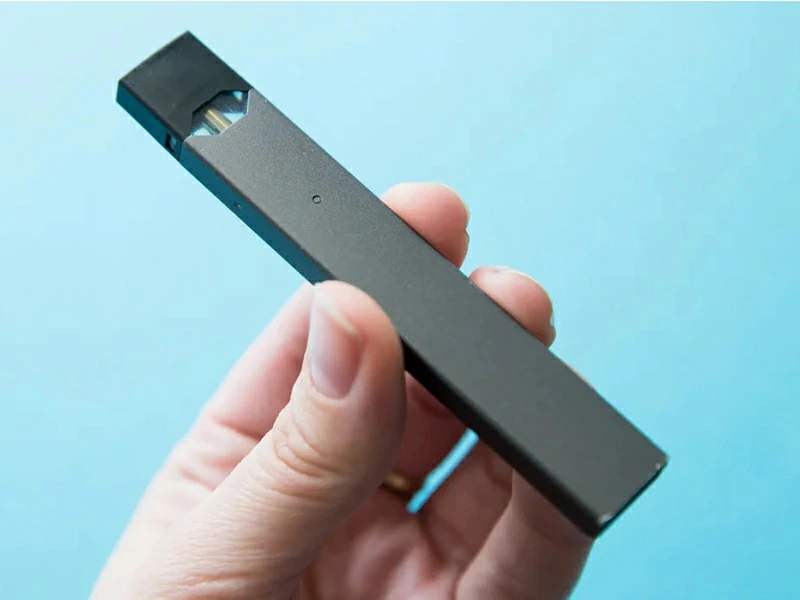
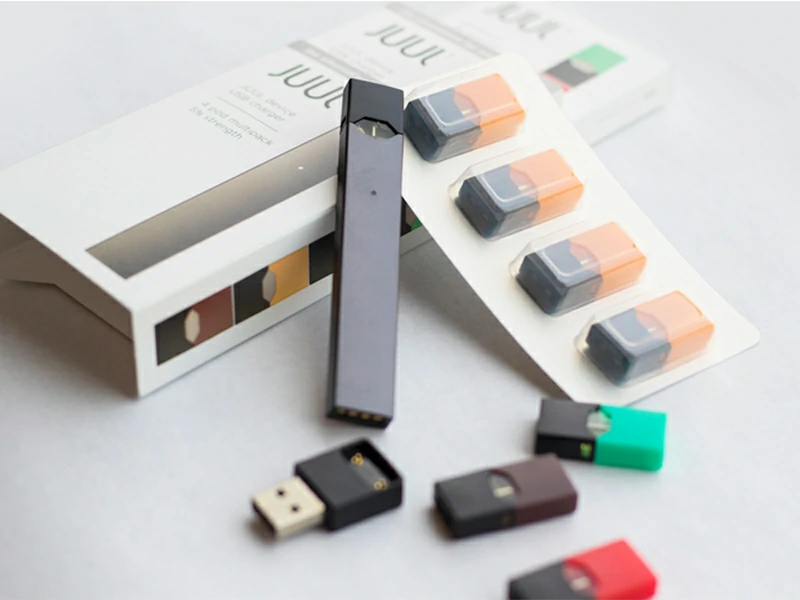
What are the health effects of vaping?
Many people consider vaping to be a safer alternative to smoking because e-cigarettes do not burn tobacco but heat the liquid to create vapor, reducing the release of many harmful chemicals. And tobacco is a known carcinogen. But vape also contains some of the harmful substances found in cigarettes.
Studies have detected acetamide (a compound used as an industrial solvent), formaldehyde and benzene (another known carcinogen) in various brands of vapes. But not all e-liquids contain all of these toxic compounds, and even if they do, the concentrations aren’t always high enough to cause concern. One study examined benzene formation in Juul and two other vapes compared to traditional cigarettes and found that traditional cigarettes carry a higher risk of benzene exposure. However, the study authors note that exposure to benzene from vaping is not negligible—that is, there are still health risks.
Another study looked at teenagers who vape and found that they had significantly higher levels of five different chemicals in their urine than teenagers who never vape.
Another problem arises when companies do not disclose the contents of their products. Juul publicly declares the ingredients in its e-liquids, but research has found that vape products are not always accurately labeled, which can lead to people inhaling more nicotine and chemicals than intended.
Nicotine is a highly addictive substance that can cause real cravings and withdrawal symptoms when those cravings are ignored. Not only is nicotine addictive, it’s also toxic. It stimulates your adrenal glands, increasing adrenaline production and causing a cascade of bodily reactions: People who use nicotine experience the release of glucose and increases in heart rate, breathing rate, and blood pressure.
This drug appears to have both stimulant and sedative effects, as it increases alertness while also enhancing relaxation.
Nicotine use is also associated with many side effects on organs and organ systems, including:
•Cardiovascular problems: increased risk of heart disease and stroke
•Respiratory problems: such as chronic obstructive pulmonary disease
•Cancer risk: Various cancers including lung cancer
•Stomach disorders: gastric ulcer
Nicotine may also harm brain development in children and adolescent
“The prefrontal cortex, the area of the brain responsible for decision-making, logic, personality expression and many other personality traits, does not fully mature until around age 25,” said Dr. Lawrence Weinstein, chief medical officer at the American Addiction Center people told CNET. “The introduction of nicotine into the brain a decade ago, not to mention the large amounts of nicotine in each pod, will undoubtedly change the developing brain.”
In addition to nicotine, using a vape (Juul or other) comes with numerous health risks, including the possibility of epilepsy, heart disease, lung damage, and birth defects.
Dentists have also noticed that patients who vape experience more cavities, tooth damage and dental problems. Especially tooth enamel, once damaged, it cannot be reversed.
As for the long-term health effects of Juul and other vapes, doctors and scientists aren’t sure yet. For health professionals, vaping is still too new to make the same claims about traditional cigarettes. But with so much research underway, new claims are sure to surface.
Why is Juul vape so popular, especially among teenagers?
Although Juul requires age verification when browsing its website and strongly discourages the use of Juul vapes by minors, the vapes remain popular with teenagers.
We can guess there are several reasons why it is so popular:
Design appeal: Juul devices are known for their simple, compact designs that resemble a shiny USB drive. This stylish, modern look attracts the attention of young people, making it a fashionable accessory.
Convenient and easy to use: Juul devices are simple to operate. Just insert the pod and use it. There is no need to ignite or adjust the temperature. This simplicity makes it ideal for users trying vaping for the first time.
Flavor variety: Juul pods offer a variety of different flavor options, such as fruit, mint, and dessert. These diverse flavors attract young people and increase their interest in Juul.
Nicotine content: Juul cigarette cartridges contain high concentrations of nicotine, allowing users to get the satisfaction of nicotine faster. This high level of nicotine makes Juul an attractive option for teenagers seeking quick gratification.
Social Factor: Juul is widely advertised and promoted on social media and among young people. Many young people share photos and videos of themselves using Juul on social media, and this social influence can prompt others to try Juul.
The explosive popularity of Juul and other similar products among children is particularly troubling because they often don’t view it as harmful. One report shows that 63% of people aged 14 to 25 have no idea that vaporizers like Juul contain nicotine.
What’s the FDA’s stance on Juul?
Well, the FDA doesn’t like Juul.
The FDA is very concerned about the increasing trend of teen vape use, especially the popularity of Juul among young people. They believe this could lead to nicotine addiction in teenagers and be potentially harmful to their health.
The FDA has taken a series of regulatory measures to address the issue of Juul vape use by teenagers. In 2018, they issued warning letters to Juul and several other major vape manufacturers, asking them to take steps to limit access to and sales of their products to minors.
The FDA requires vape manufacturers to verify age before selling them in retail stores to prevent minors from purchasing them. They’ve also restricted sales of certain vape products, including certain Juul flavors, to make them less appealing to minors.
If you want to know more about Juul or other vapes, you can contact VECEE or leave a message below.
Shenzhen Yocan Technology Co., Ltd. has been a leading healthy vaporizer manufacturer since 2013. We specialize in designing and innovating high-quality disposable vapes, pod systems, batteries, and other smoking products. It is to become an innovative electric vape pen and customized vape hardware technology company integrating R&D, design, manufacturing, and marketing.
Since 2013, Yocan’s business has expanded to more than 20 countries and 60 regions worldwide. The disposable vape products and pod syster products produced are deeply loved by consumers. We have also established strong partnerships with major distributors from North America, Europe, Australia, South America, and the Middle East. For more information, please go to www.vecee.com.

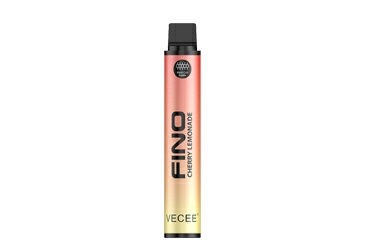
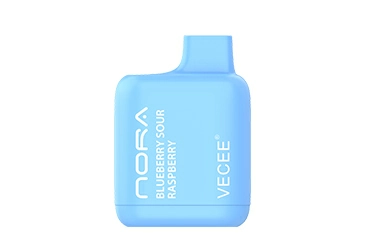




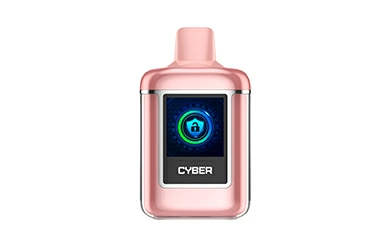





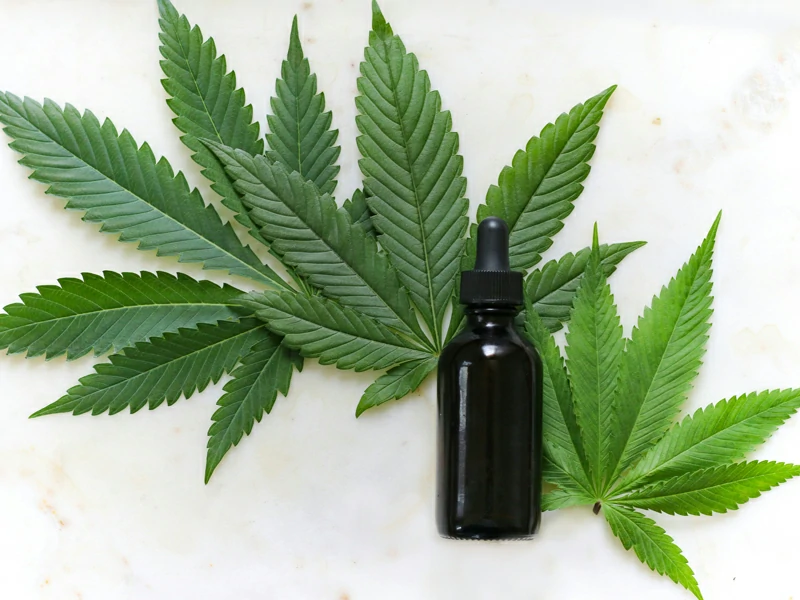
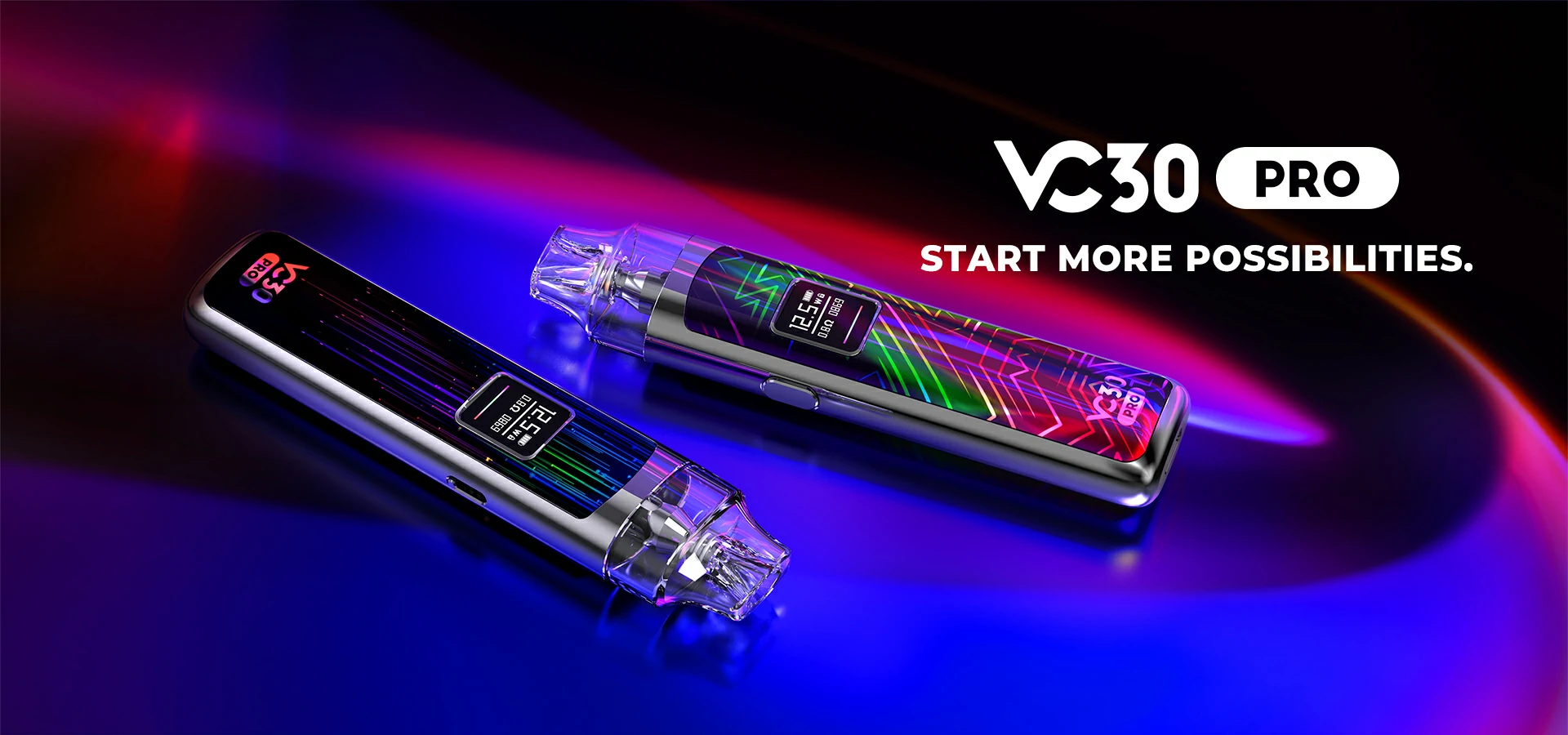
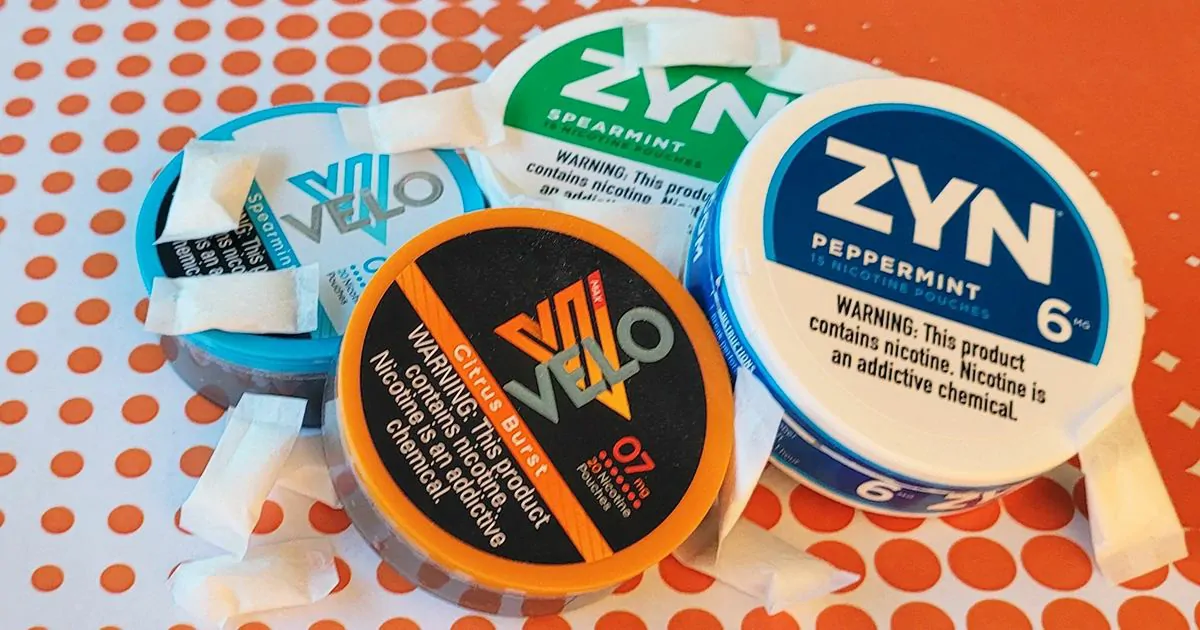


0 Comments